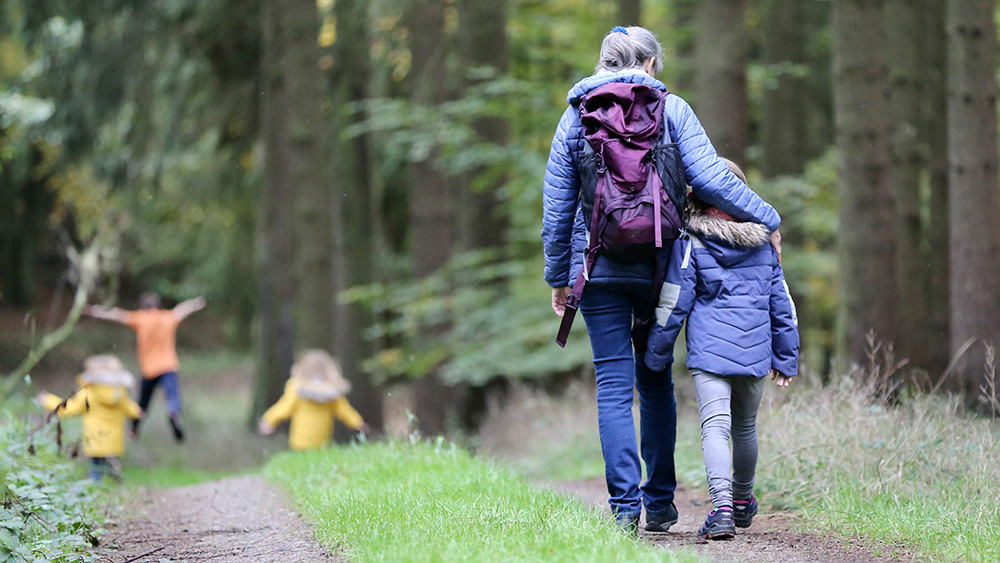Our environment is our most valuable resource, and schools play a foundational role in creating the new generation of environmental stewards.
According to UNICEF, the looming threat of climate change affects children’s ability to survive and thrive globally. These children are also powerful agents for change — which is why environmental education is “imperative” to prepare today’s K-12 students for the many environmental pressures of our rapidly changing world.
Teaching children to care for the environment during their K-12 education can have wide-ranging benefits, from activating future conservationists to passing on valuable skills for the future job market.
In honor of Earth Month, learn how to implement environmental education in the K-12 classroom — with 17 tips and resources for different grade levels!
Why is environmental education important?
Part of the U.S. Environmental Protection Agency’s (EPA) role is to support environmental literacy nationwide through The Office of Environmental Education.
The EPA says that effective environmental education is designed to increase awareness and knowledge of environmental issues, teach critical thinking, and enhance the learners’ problem-solving and decision-making skills without advocating a particular viewpoint.
According to a UNICEF article that frames environmental education as a ‘pending task,’ schools are the perfect space “to create and implement environmental solutions that generate more sustainable lifestyles and strengthen resilience to climate change.”
The critical thinking and problem-solving skills students learn, the UNICEF article continues, can help them “face the effects of climate change comprehensively from a responsible citizen’s point of view [while] defending and being consistent with these values in all areas.”
The benefits of environmental education
K-12 environmental education has wide-ranging benefits for students, educators, and schools alike.
Environmental education gives students an alternative to electronics. For one thing, environmental education provides a great counterbalance to a modern education system that is increasingly “plugged-in” to Internet and electronics use.
Helping children create a connection with their environment naturally involves going outside! Varying the school-day environment and spending more time in the fresh air can help keep students active and healthy while catering to different learning styles.
Environmental education helps schools meet academic standards. Not only do environmental education programs emphasize critical thinking, reasoning, and problem-solving skills, they also create interdisciplinary opportunities to advance academic standards in the K-12 classroom.
Project Learning Tree®️, an initiative of the non-profit Sustainable Forestry Initiative®, notes that environmental education programs can help address academic standards for various subjects, including Common Core State Standards for English Language Arts and Mathematics as well as Next Generation Science Standards and the College, Career, and Civic Life (C3) Framework for Social Studies.

Environmental education prepares students for life after graduation.
Well-developed environmental education can energize students by showing them real-world applications of what they learn both inside and outside the classroom, and help them to apply relevant STEM skills, contexts, and subjects.
As with related STEM fields, environmental science is a burgeoning job market. According to the Bureau of Labor Statistics, jobs that require “green skills” are projected to grow 8% over the next decade, as governments and institutions dedicate themselves to reducing greenhouse gas emissions and reaching “net-zero” emissions goals.
Environmental education empowers educators to meet the moment. By encouraging teachers to design interactive and interdisciplinary environmental education experiences, schools can empower them to take on new, meaningful areas of leadership.
Students that benefit from environmental education programs can go on to influence policy-making and work in support of solutions that can help us mitigate and adapt to climate change.
For primary through secondary school educators, this means plenty of opportunity to plant the seeds of a passion that students can later use to build their careers and make a lasting impact.
Implementing environmental education for K-12 students
You can teach children to enjoy and protect nature at any age! Here are some ideas to build environmental education into the school week while accounting for grade level.
Environmental education for elementary schoolers
At this young age, students will love interacting with flora and fauna as they enjoy outdoor time.
-
Lead by example. Teach students the fundamentals of environmental stewardship by practicing the three R’s (reduce, reuse, recycle). Encourage students to reduce water and energy use by turning off taps and lights and to sort waste correctly in school recycling bins.
-
Plan outside time into the schedule beyond recess. Play games, hold outdoor events, take short supervised walks, and lead sensory walks.
-
Have outdoor scavenger hunts, a versatile activity that can be incorporated into many different school subjects.
-
Do art projects with natural objects like leaves and twigs that students find on scavenger hunts.
-
Host class pets. From worms to crayfish to hamsters, a class pet helps students learn how to take care of living beings, and opens a conversation about how different animals enrich our shared ecosystems.
-
Start a school garden. Kids are never too young to learn how to take care of plant life, or to reap the benefits of the harvest.
-
Plan age-appropriate field trips; for example, to the local zoo, aquarium, or park.

Environmental education for middle schoolers
In addition to the ideas given above for elementary-age students, build these ideas into your environmental education program for middle schoolers:
-
Grow plants in the classroom. Easy-care plants like aloe vera and spider plants, as well as simple herbs like mint and lemon balm are low-hanging fruit for homeroom, science, and home economics teachers. Bonus: Plants can improve indoor air quality as they bring more greenery into the classroom.
-
Teach composting. A worm bin is a great, not-too-smelly way to show the power of even the smallest beings and educate students about food waste and sustainable living.
-
Classify local flora and fauna. Have students take pictures of plants and animals they see around school and create their own identification materials.
-
Support an environmental club. When students get excited about the environment, they may want to take it outside the classroom, too. A club enables students to brainstorm their own initiatives.
-
Plan age-appropriate field trips; for example, to a farm or animal sanctuary.
Environmental education for high schoolers
Use these ideas to build on the environmental exposure students have gotten in elementary and middle school:
-
Ask what they care about. Youth participation is growing in international climate movements like Friday For Future. Chances are, students are already tuned-in to environmental challenges — engage them by involving their priorities and passions.
-
Do science experiments. Forget the infamous DIY volcano — there are many ways to link science class with climate literacy; for example, by building batteries, simulating ocean spills, or creating terrariums.
-
Challenge students to build new habits. Whether your students want to drink more water, try a vegetarian diet for a month, or go zero-waste, encourage them to set reasonable goals and keep track of what they learn about themselves and their impact.
-
Help students build in-demand skill sets towards their future careers! In line with our blog about ChatGPT and generative AI, we recommend diving into the resources created by AI4ALL, a U.S. nonprofit dedicated to increasing diversity and inclusion in AI education, research, development, and policy — especially their learning plan for AI & the Environment.
-
Organize volunteer opportunities. Both student-run environmental clubs and school administrators can highlight initiatives that encourage students’ connection with the great outdoors. For example, students can plant trees and flowers on school grounds, investigate potential repair or reuse projects in school buildings, or organize weekend litter patrols or cleanups of local waterways.
-
Pro tip: Incentivize student participation by explaining the benefits for their college applications.
-
Take the next step
“Right now, in the second decade of the 21st century, preparing our students to be good environmental citizens is some of the most important work any of us can do. It is for our children, and our children’s children, and generations yet to come.”
— U.S. Department of Education Secretary Arne Duncan, Sep 2010 (source)